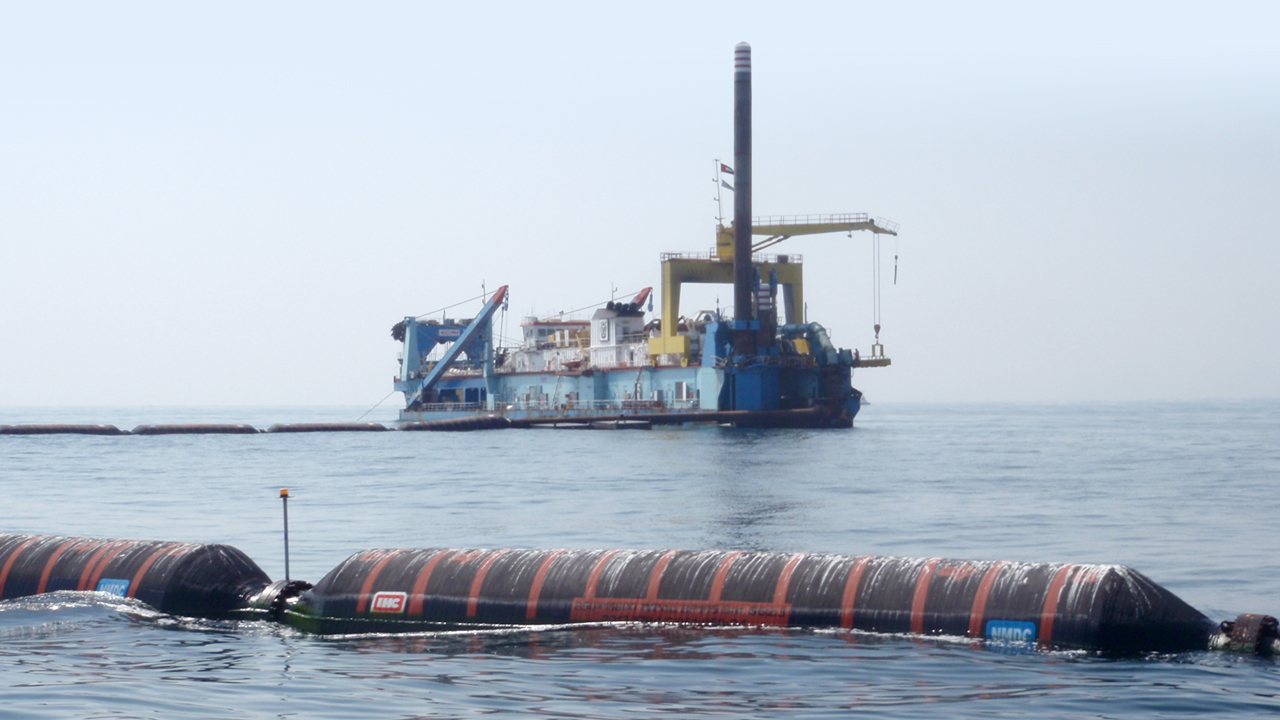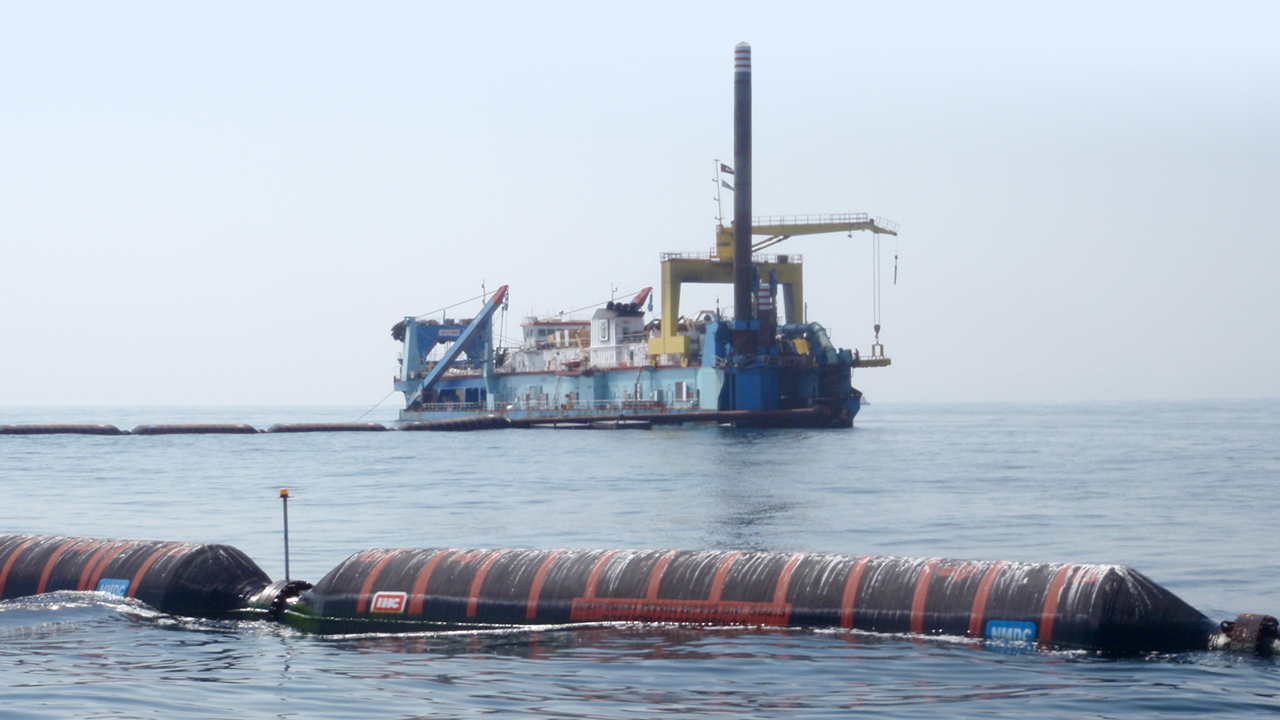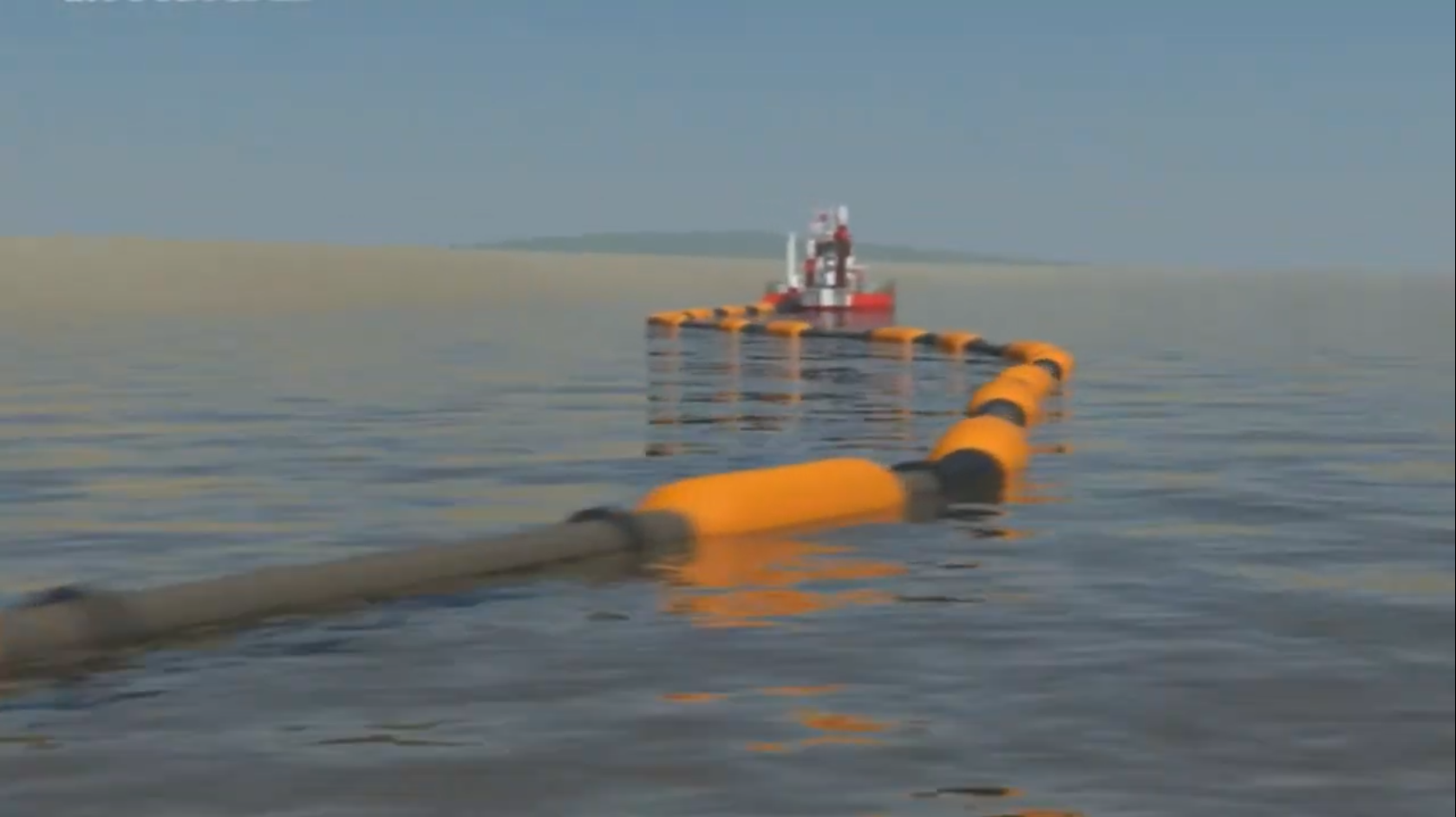Introduction slurry transport via pipelines

Slurry transport via floating hoses
Pipelines are commonly used in dredging to transport the dredged materials from the dredger to the disposal site. Cutter suction dredgers in particular use hydraulic transport. Hopper dredgers also use pipelines to transport the soil from the hopper to shore, for instance, in land reclamation projects. To transport dredged material such as sand or clay through a pressurised pipeline, it must be mixed with water. This mixture of solids and water is known as slurry. Transport of the dredged material via pipeline is therefore referred to as slurry transport.
Working principles of slurry transport
Pipelines enable us to continuously transport slurry over long distances, with or without the aid of booster stations. However, the transport of a mixture of solids and water, is more complicated than the transport of solely water, oil or gas, for instance. The particles in the slurry will settle if there is not enough turbulence to suspend the particles in the liquid. Therefore, it is important to understand the basics of slurry transport.
Critical velocity
An important factor to be considered when pumping mixtures of soil and water is the critical velocity. Velocity is the speed of the slurry in a certain direction. The critical velocity is ‘the velocity below which the grains in the mixture start falling out of suspension and start forming a layer at the bottom of the pipeline’. When you dredge below the critical velocity, the particles will sink out of suspension and they will start to form a bed of material on the bottom of the pipeline. If you continue to dredge below the critical velocity you might end up with a complete blockage of your pipeline, resulting in long delays.
The critical velocity of sand grains in the pipeline system depends on a couple of factors. The most important parameters are:
- Grain size: the bigger the grains, the higher the mass, and with that the attraction by gravitation. When the grains are smaller, the mass of the particles is smaller and the gravitational force will be lower. It is easier to keep smaller particles in suspension.
- Pipeline diameter: the smaller the pipeline, the more turbulent the water flow inside of the pipeline. This makes it easier to keep the sand particles suspended in the water. The bigger the pipeline, the smoother the water flows and the easier it is for the particles to settle in the pipeline.
Pipeline resistance
To transport slurry via pipelines, a certain pressure is required. The centrifugal dredge pump in the dredger generates this pressure, but as a result of the resistance in the pipeline, the velocity of the slurry will gradually decrease. If the velocity falls below the critical velocity, the pipeline is at risk of clogging. This is where auxiliary equipment such as booster stations or additional dredge pumps come into play. The right balance between pipeline characteristics, pump power and soil properties must be monitored to ensure the soil reaches the discharge site.
The main components influencing pipeline resistance include the following:
- Pipeline length: the slurry flows through the pipeline and rubs against the walls of the pipeline over its total length. The longer the pipeline, the longer the length over which the particles bounce against the walls and the more friction there is in the pipeline.
- Pipeline diameter: the bigger the diameter, the lower the resistance. When the pipeline diameter is larger, the relative area to which particles can bounce and rub against it is smaller in relation to the number of particles in the pipeline. You can compare this to drinking through a straw – the bigger the straw, the easier it is to drink from it.
- Pipe material: the material of the pipeline influences how smooth the pipeline is. A steel pipe is smoother than a rubber pipeline and therefore the pipeline resistance of a steel pipe is lower than the resistance of a rubber pipeline.
- Number of particles inside the pipeline: soil particles bounce against each other, as well as against the pipeline walls. The more particles there are in the slurry, the more they bounce against each other and against the walls. This results in a higher pipeline resistance.
- Number of bends, valves and other obstacles: in the pipeline, there are many obstacles like bends and valves that create additional friction and with that, resistance to the motion of the mixture. Since the mixture has to move around the connections of the valves, or change direction in the bends, it adds friction to the system and pipeline resistance.
Wear
Wear is a very important consideration in the design and operation of slurry systems, as it affects both the initial capital costs, the lifespan of components and the reliability of the system. Wear in a slurry pipeline is accomplished by two mechanisms: mechanical abrasion or erosion and chemical corrosion. The two mechanisms may act singularly or simultaneously. Nearly all soils transported in dredging practice are erosive. The characteristics of hardness, angularity and size of the grains influence the wear of the dredging equipment. Some iron concentrate slurries are thought to be both erosive and corrosive in that the corrosion scale (oxide film) on the pipe wall, generated by the oxygen in the slurry, is eroded by the fine but heavy solid particles.

Want to know more about slurry transport via pipelines?
Get in touch and our experts are happy to help you.
